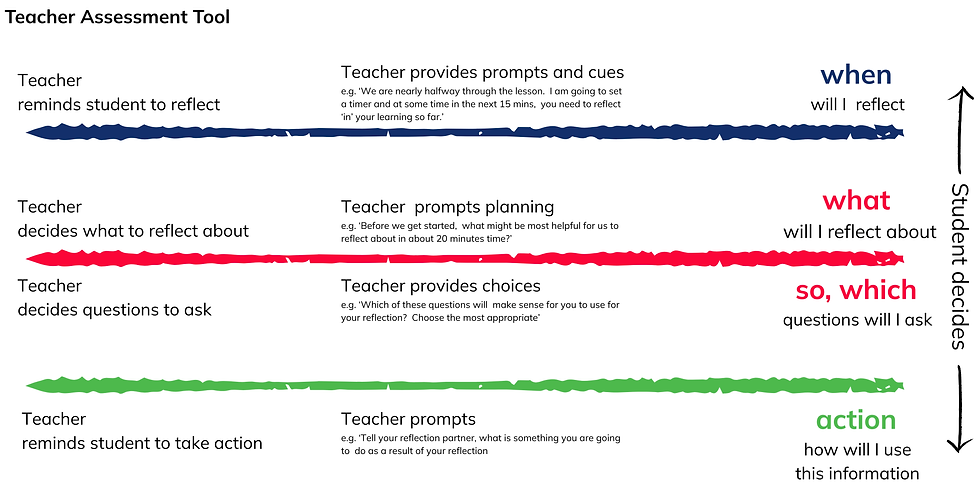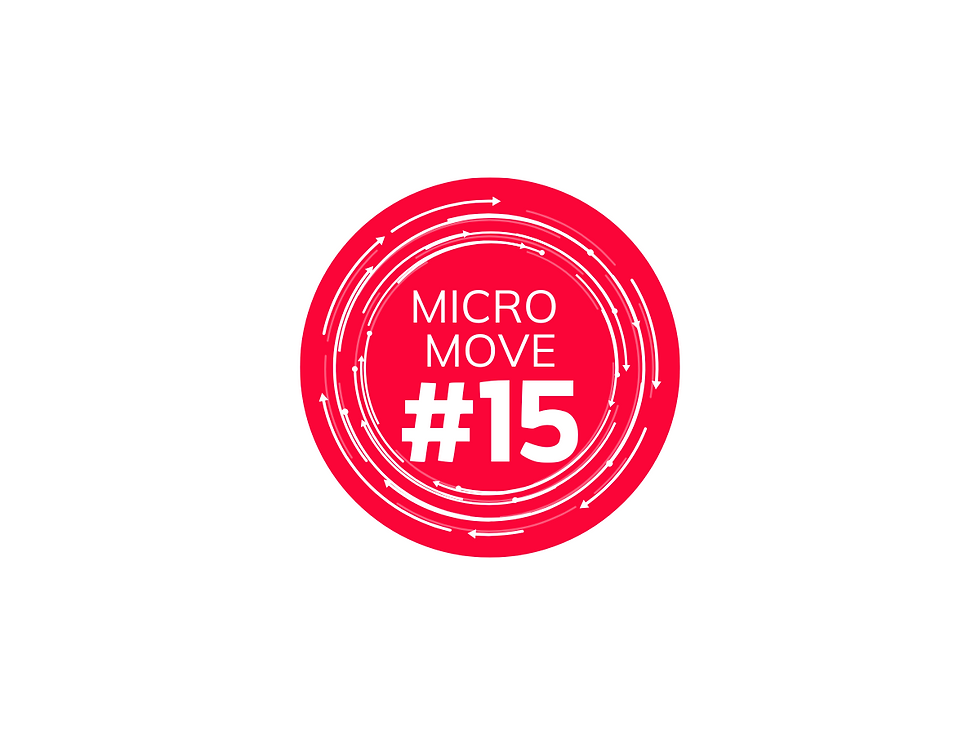Reflecting IN and ON Learning: The Journey to Student Independence
- learning906
- Jul 11
- 3 min read

This quote has often turned up in professional learning and readings. It is John Dewey’s well-known quote:

It’s that simple—and that powerful. Reflection helps students make sense of what they’re learning, recognise their progress, and take more control over their next steps. It shifts them from doing ‘work’ to understanding themselves as learners.
In Micro Move#15 Slow Down: Reflecting IN and ON Learning we introduced that effective reflection isn’t just something that happens at the end of a lesson or unit - it happens both during and after learning. We also emphasised that quality reflection requires teaching and practice.
To what extent do you teach your learners how to effectively reflect IN and ON learning?
To what extent can your learners independently reflect IN and ON learning?

So how might you do that? How might you move students from where they are now to increased independence as reflectors ‘in and on’ their learning?

As part of our work with schools on implementing learning strategies, we use this Frame 1. Our core claim: for a strategy to be used effectively—and eventually chosen and applied independently by students—it must include all four components.
So, what would it look like if students were independently reflecting ‘in and on’ their learning?
Idea 1: Get clear and provide opportunity for teacher and student assessment and feedback.

With the Year 6 Team from Trinity Gardens Primary School, South Australia, we tackled just this question and our initial thoughts were eloquently captured in this image 🙂.
What a great stepping stone to clarity, assessment and feedback.
And when cleaned up… it looked more like this.


In addition to creating a bank of reflection questions and looking at students setting reflection goals, the Year 6 Team were heading off to test this prototype. Stay tuned for future iterations.

(see what we did there)
Idea 2: Teacher Questioning as an Instructional Strategy
Another reality of introducing any learning strategy is that in the learning, students will be at various stages in independence. Some will require more teacher support and scaffolds whilst some, once they are clear about the expectations and the ‘how to’, start right away. Some were already reflecting but may not have had a language to talk about it.
How might you respond to this?

One suggestion is upping the reflection that occurs through teacher interactions with students; the use of the instructional strategy of teacher questioning. This starts with a curious teacher who knows how to ask the right question—and then listens. Some of the most powerful moments for student learning happen in the in-between spaces—when we pause, notice, and invite reflection. One way to unlock this potential is by adopting a simple but transformative mindset: be continuously curious.
Being continuously curious means deliberately creating space to ask questions, listen closely, and help students think about their own learning. It’s not about delivering answers—it’s about guiding students to make sense of what they’re doing, why they’re doing it, and where they might go next.
The MAGIC happens when we combine noticing with
quality open, reflective questions.
Which of these might you add to your repertoire?
What are you learning about…? Tell me more…
How are you finding…? Tell me more…
What do you think about…? Tell me more…
How could we improve…? Tell me more…
What’s missing from…? Tell me more…
What might be different if…? Tell me more…
What wouldn’t you change about…?
What are you noticing about…?
Can you give me some examples of…?
These questions help students become more aware of their thinking, choices, and learning strategies. And when we follow up with genuine interest—Tell me more…—we show that reflection isn’t just a one-off activity; it’s how we learn.
So next time you’re walking around the room, conferring with a student, or noticing a shift in energy, pause. Ask a question. Listen deeply. And say, Tell me more… That’s where learning grows.
Another idea: Provide strategies, tools and processes
Head back to Micro Move#15 Slow Down: Reflecting IN and ON Learning for some suggested structures, routines and sentence stems to support students.

The Music, Performing Arts and Media educators at Strathmore Secondary College, Victoria, have been strategically planning for students to 'Reflect on their Progress'. This has included considering frames which can be re-used independently by students throughout their learning. One example is in using a Traffic Light Routine.
For students to reflect meaningfully in and on their learning, they need to understand the purpose of the strategy, see how it helps them, and practise using it with support. When these elements are in place, students are more likely to take ownership and apply the strategy independently AND reap the rewards of reflection.





Comments